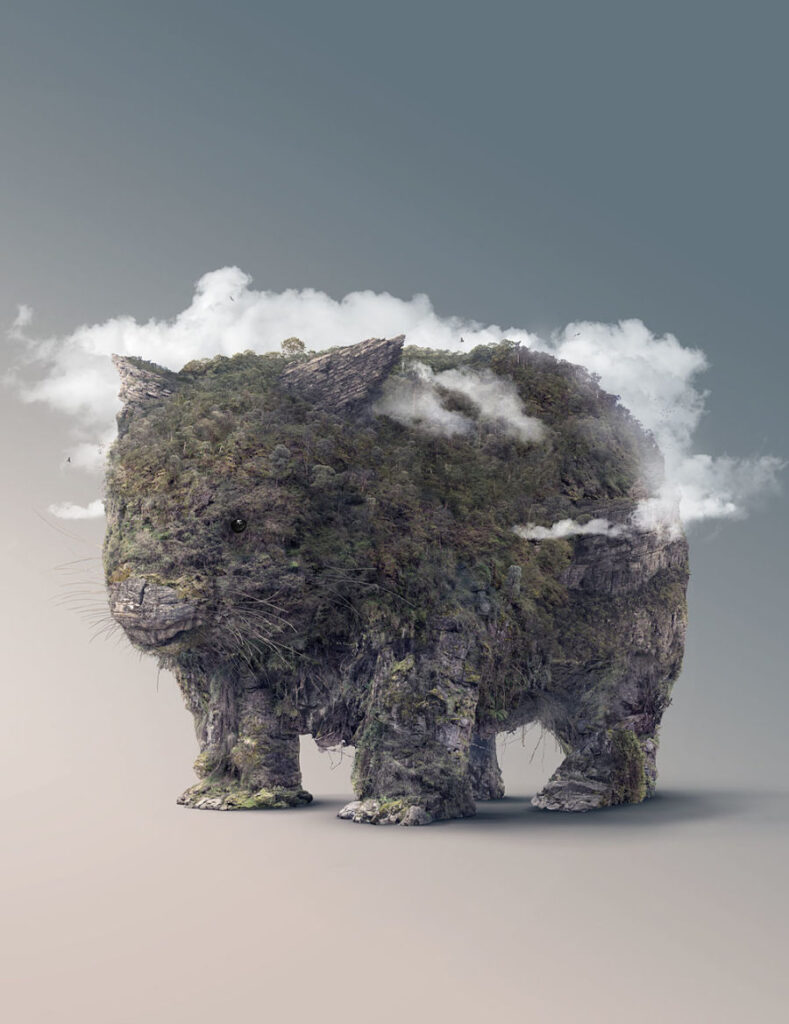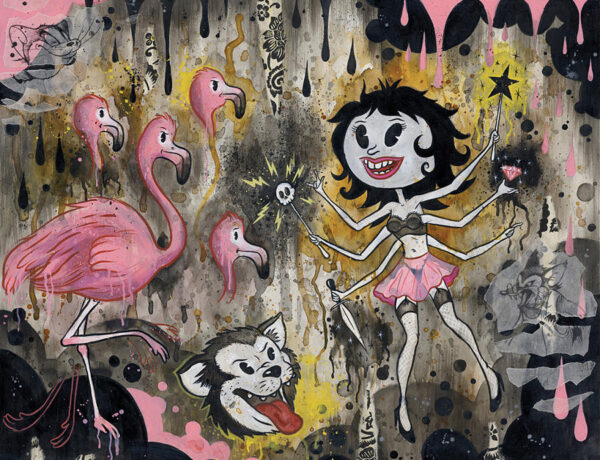Exclusive interview with Josh Dykgraaf, 2nd Prize Winner, Digital Art Award, 2020 Beautiful Bizarre Art Prize
At first glance, many of the images Josh Dykgraaf produces appear to be of animals. On closer inspection, the animals are anything but. Many of them are conglomerations of materials and textures. Some are even incorporated from landscapes. Josh uses stone, leaf, petal, and machine to show just how interconnected things are.
Majestic elephants carved from snowcapped peaks, towering colossi formed from historical buildings, and even fantastical cities afloat among the clouds. We hope you enjoy our exclusive interview with Josh Dykgraaf, 2nd Prize Winner of the Digital Award in the Beautiful Bizarre Art Prize 2020.
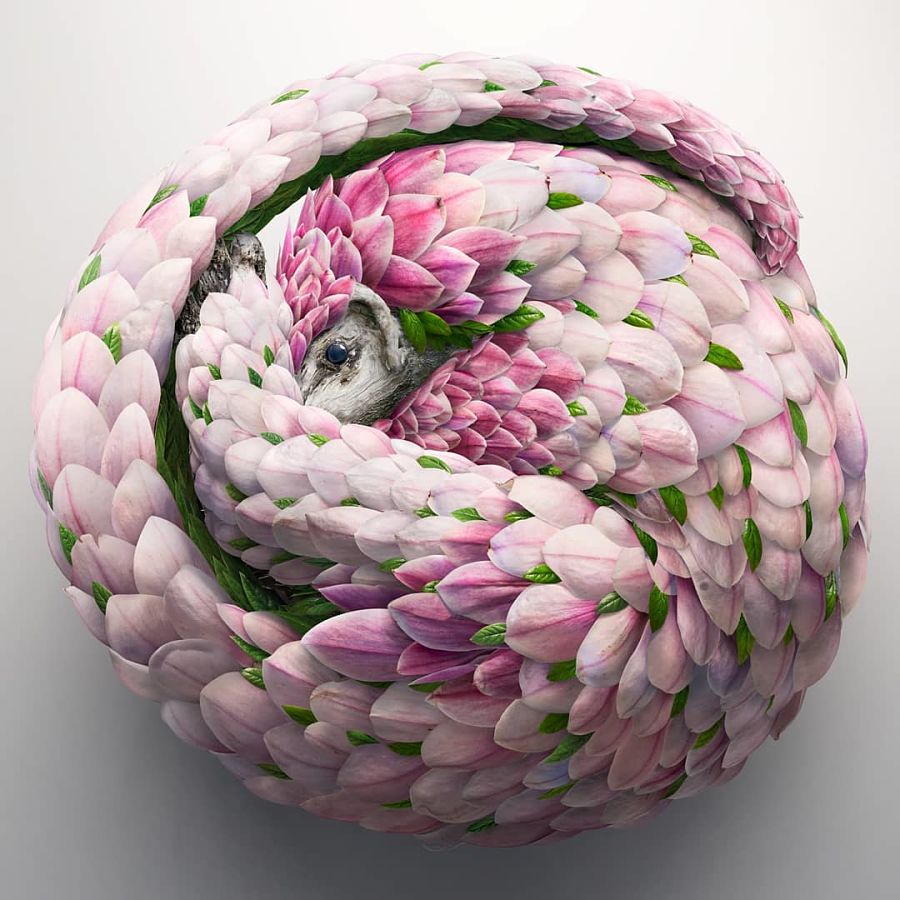
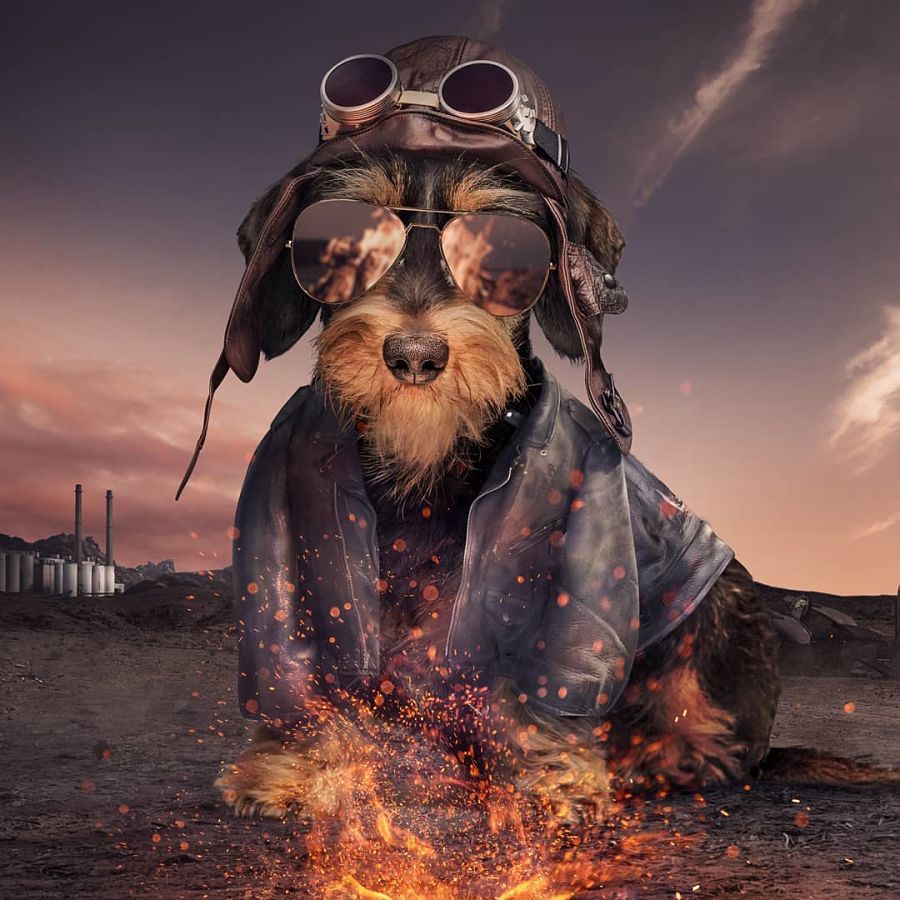
Who are some of the artists that have inspired you and what is inspiring about their work? What are some of your favorite pieces from them?
MC Escher has always been a lifelong inspiration for me. I have been fascinated by his experimentation with perception and perspective for as long as I can remember. The Australian artist Justin Maller inspired me to enter the field of photomanipulation. This piece by him had a lasting impact on me.
I was recently introduced to the work of Raku Inoue, who creates animal forms from natural elements like I do, except with a totally analogue process. It’s gorgeous work.
I studied a double major in photography and graphic design at Uni, before finishing with post-grad in Communication Design and majoring in Illustration, rather than a formal art school. This combination gave me a set of skills and interests that made my work possible.
Do you prefer working with clients or working freelance?
To be honest, I’m not sure I can properly answer that. I’ve worked full time freelance for about 8 years now and haven’t worked in-house for years. It’s hard to imagine working for someone else. Though, I definitely enjoy the camaraderie you get working in a small, tight-knit team from time to time. Freelancing can be a lonely experience. I compensate for that with the sense of community I get from the great co-working space of Framework, in Carlton, Melbourne.

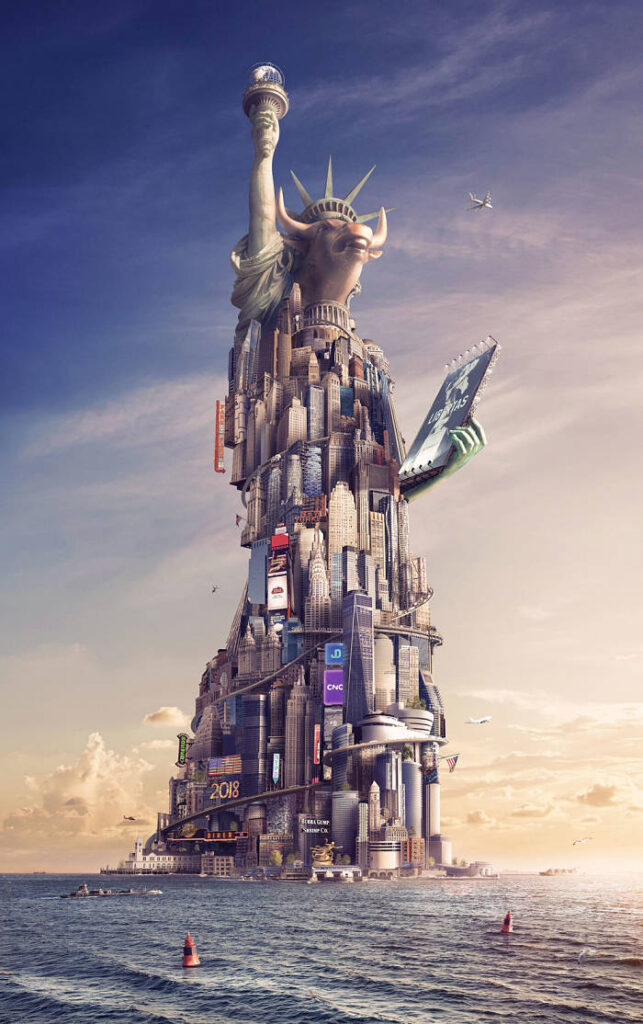
What are the steps you took to becoming a digital artist? What were you doing before you became an artist?
I was originally studying architecture and that was my first passion – I loved it. But to be honest, I wasn’t great at it. I was also pretty terrified of the hyper-competitive job market that I started learning about on placements. The industry produces far more graduates than it needs… at least, back then, in the middle of the 2008 Financial Crisis. Meanwhile, I was taking a design elective and fell in love with image making; I decided to make a career switch. I started freelancing while making art on the side but I only decided to get serious about my art in early 2019.
What was one of the most important lessons you learned from art school?
I studied a double major in photography and graphic design at Uni, before finishing with post-grad in Communication Design and majoring in Illustration, rather than a formal art school. This combination gave me a set of skills and interests that made my work possible. Technical skills in photography combined with lessons in effective image making from graphic design and an understanding of the viewer’s experience in Communication Design.
My creative process is a lot like lying on the grass and staring up at the clouds to make out different shapes in them.
What sort of things keep you occupied when you aren’t working on art?
My main hobby since COVID has been gardening, maybe as a response to not being able to get out and explore nature. I also read quite a bit of fiction and play games, especially those that involve world building and escapism. When I’m not making art, I also work in brand development and image making for advertising.

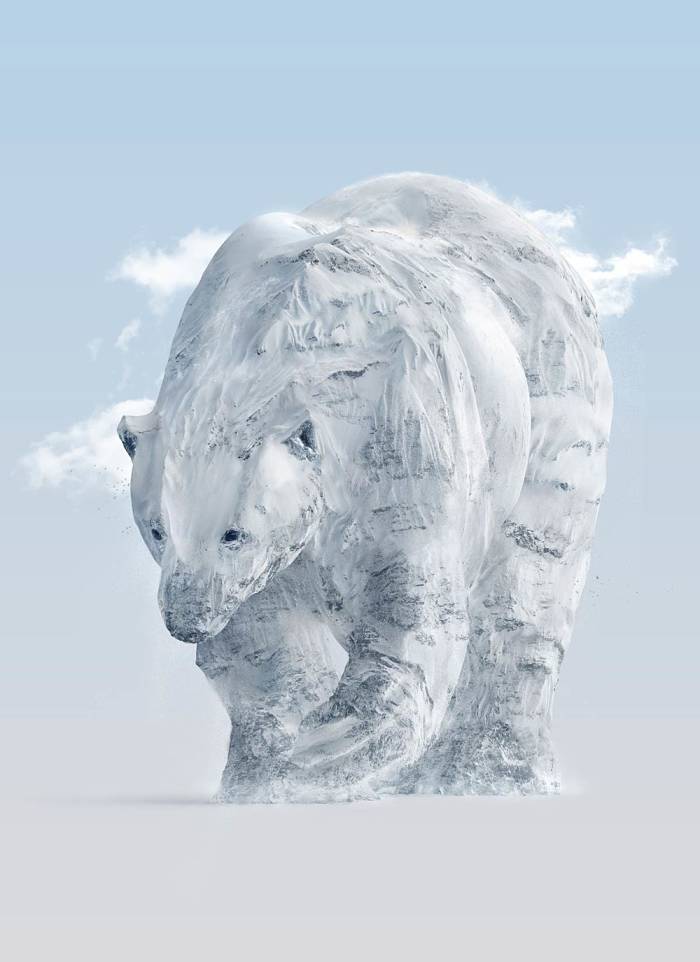
Where do you find inspiration for your work?
I usually find inspiration in everyday objects by paying attention to forms and shapes in objects that look like totally different things. For example, in the Terraform series, I noticed that certain rock formations in some holiday photography looked like the hide of an elephant. My creative process is a lot like lying on the grass and staring up at the clouds to make out different shapes in them.
I match angles and lighting to the relevant part of the animal, building up as I go. The process takes anywhere from 30 to 60 hours per image and anywhere between 1,500 to 4,000 layers in the final Photoshop document.
Tell me about your artistic process.
Looking at my work, it might not come as a galloping shock that I was a massive Lego kid. My process is a bit like building something with Lego without the instructions. In this case, pieces of photos are the Lego blocks.
For a series that might involve landscapes, I will travel to find the right imagery or bring objects to a mini studio to shoot under lights. I end up taking several hundred images of the subject matter. When I have all that material, I start cutting out the different parts of images that I want to work with. I might start with a couple of thousand shots in my camera, then sift that down to maybe 100 images [that] I think actually fits part of the animal’s anatomy.
Then using a reference image, usually of the animal in a zoo or sometimes a sketch that I’ve drawn, I’ll start layering images on top of the animal with these pieces that I’ve cut out. I match angles and lighting to the relevant part of the animal, building up as I go. The process takes anywhere from 30 to 60 hours per image and anywhere between 1,500 to 4,000 layers in the final Photoshop document.
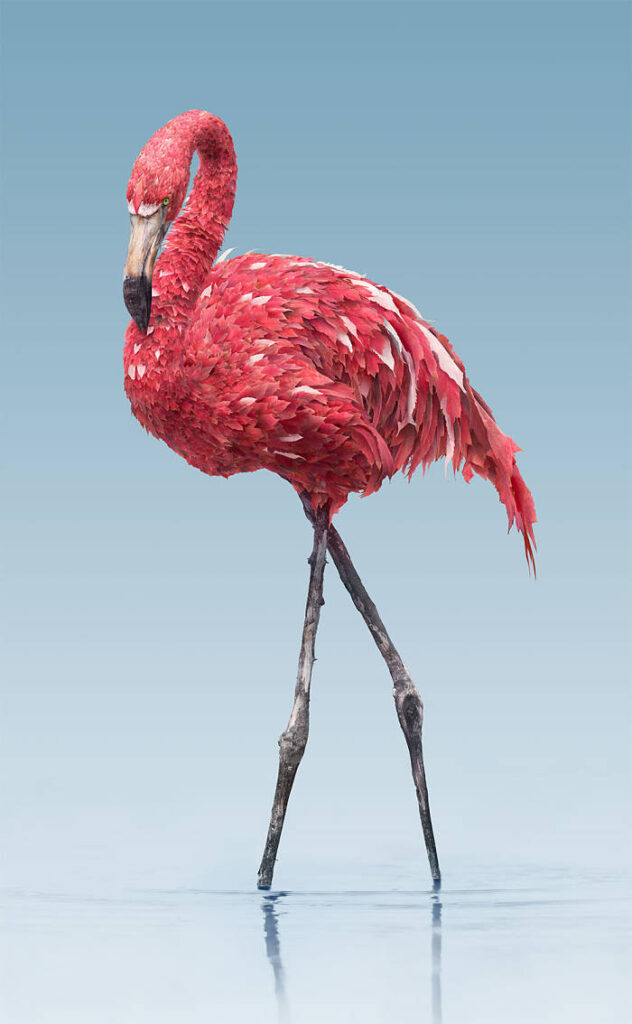
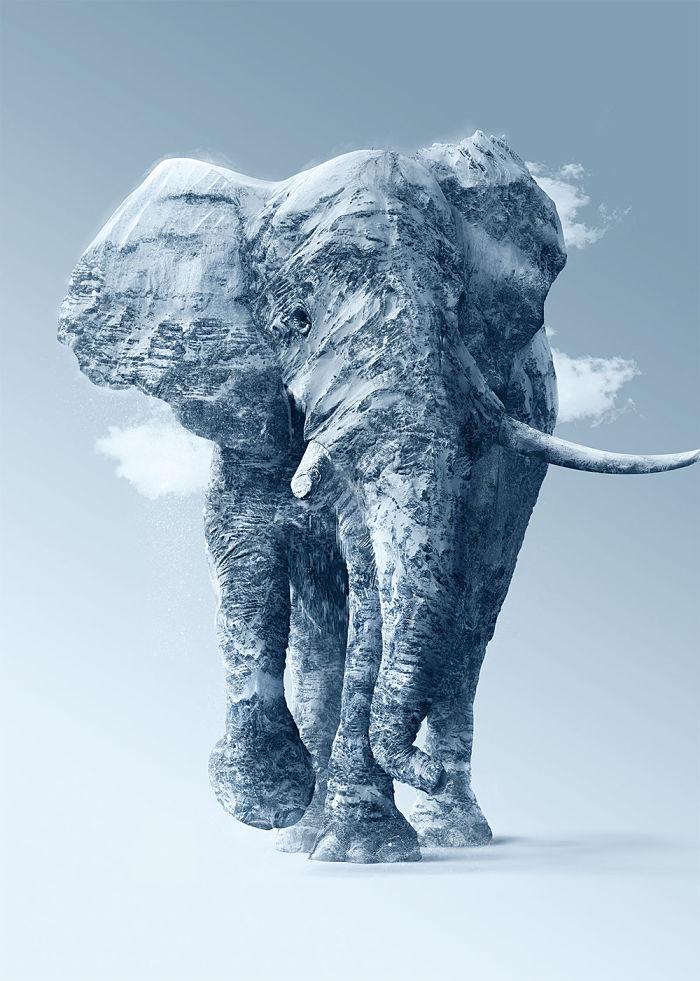
What are your favorite subjects and why? What is your fascination with landscapes?
Ooooooh. That’s tough. My favourite material to work with is snow and mountainous landscapes. I love snow and find it pretty soothing to look at. Working with this material has helped get through some tough periods in my life.
I think part of my fascination with landscapes comes from being curious about the commonality I find between the form and texture of different animals and their habitat, while also playing with scale and the viewer’s perception. Put simply, I also just really enjoy hiking and exploring nature. This is one way to turn that into meaningful employment.
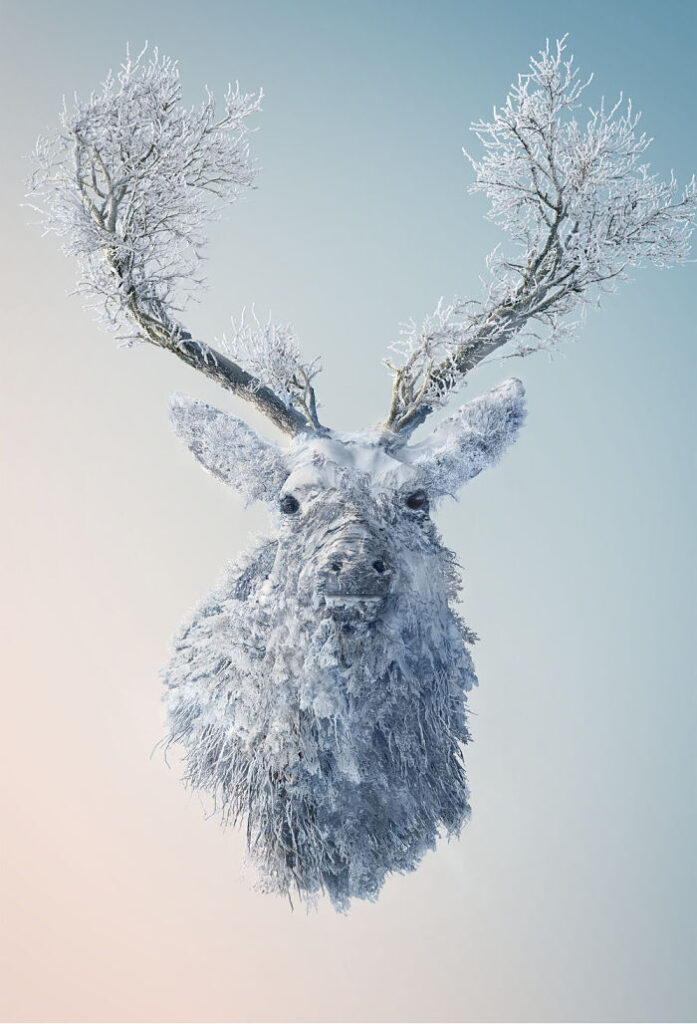
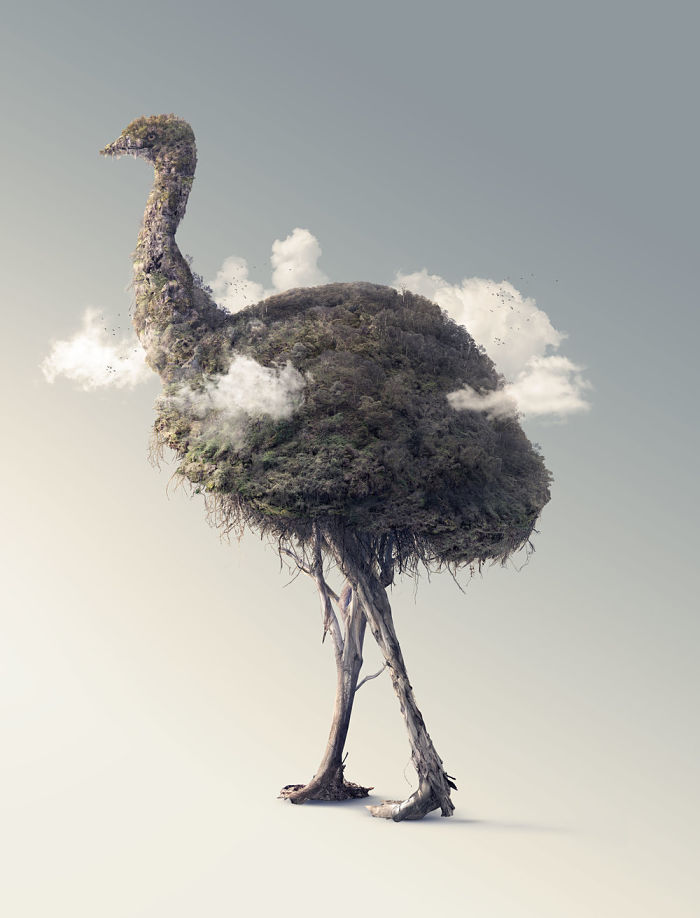
How do you see your art fitting into the world as it is currently? Is there a direction you want your art to take in the future?
I think some of my work really strikes a chord with people in a world where the effects of climate change are becoming much more apparent to us. As the lockdowns here ease, I want to work on more projects that look at these issues, especially habitat destruction here in Australia. Being in Melbourne, I’ve been pretty hamstrung [since] I can’t wander out to shoot new material.
Another project I’m developing, which is [currently] on the backburner due to COVID, looks at displaced indigenous people. I want to partner with various groups to create portraits of indigenous people made from the landscapes of the lands they call home. For example, the first Australians made from the Northern Territory, Native Americans made from the Rock Mountains in North America, Mongolians made from the steppes there and so on.
The idea comes from a commonality that you often see in the skin tone of these people and the earth of their homelands. To me, it’s emblematic of the far more harmonious relationship they often have with their land than their invaders have.
Why did you enter the Beautiful Bizarre Magazine Art Prize?
I find my work has a tough time fitting into conventional categories of work. It’s too heavily manipulated for photography competitions and too photo-real for illustration. Many fine art critics find this kind of digital art objectionable. For example, this year I had my first ever review by a major publication for my second solo show, in February. The critic’s editor instructed him to justify it by saying , “why does being good at Photoshop make it art?” Consequently, half the review was on that topic rather than on my work.
Because of this, sometimes I feel like I’m wasting my time and money entering my work for awards. I know that there’s a chance my work might simply be discarded regardless of its quality. By contrast, the Beautiful Bizarre Art Prize is very open minded to new mediums and styles of work, so it felt like a good fit. I love so much of the work that BBM features and I wanted my work to be alongside that.
What do you feel you have gained from this experience?
The biggest thing is [that it has] put me in touch with several other established artists, in similar fields here in Melbourne, who I hope to stay in touch with and meet post-COVID. I had no idea that there were so many near me.
Would you recommend it and encourage others to enter? If so, why?
Of course, especially to artists in newer digital mediums. There are a few awards and publications that bridge the divide between digital and traditional art as well Beautiful Bizarre.



